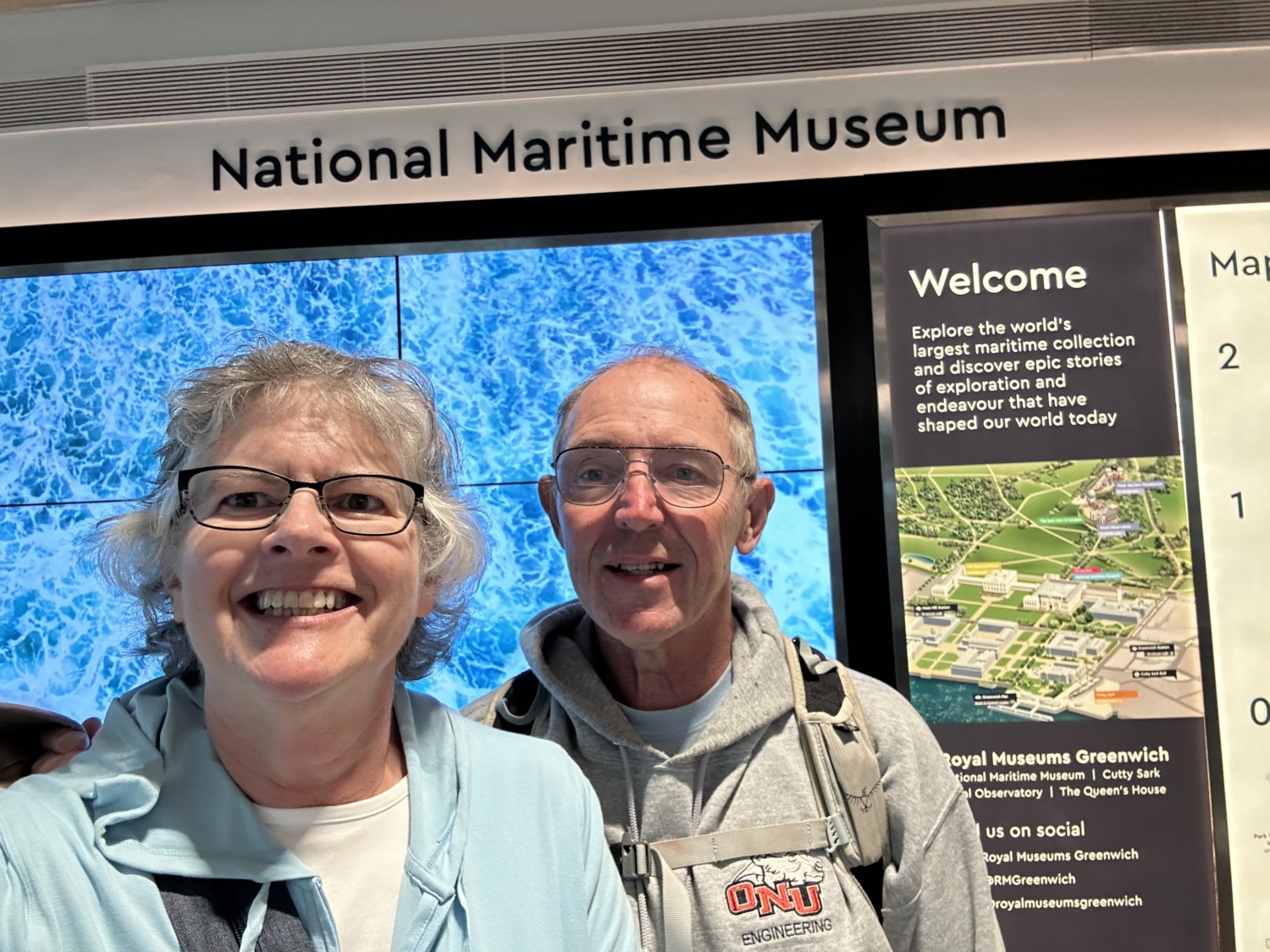On our full day in London before our tour starts, Tom and I headed to Greenwich to see the Royal Observatory and the Prime Meridian. This was a special interests of Tom’s, but I was eager to go as well. In order to get there, we had to negotiate the Tube and the DLR.
We bought 24 hour passes for public transportation and Tom figured out our route. We got on the Tube at Marble Arch and took it to Bank Station. Then we went down and down and down to the DLR (light rail train). We rode that to the Cutty Sark Station in Greenwich. Doing all that was easier than I expected. Everything is very well marked and there are lots of maps.
It took about 45 minutes to get from our hotel to Greenwich, which wasn’t bad. And it only cost about $20 per person round trip. In fact, we could have traveled to a lot of other places for that $20, but Greenwich was quite enough.

Our first stop in Greenwich was the Royal Observatory. You can see the Prime Meridian without going in the Observatory, but we wanted to do the whole thing. Admission was, again, $20 for each of us. For that price we got to see the wonderful displays of clocks. We learned about the importance of time for navigation in shipping. And, of course, we got to stand on the Prime Meridian, where time begins each day.
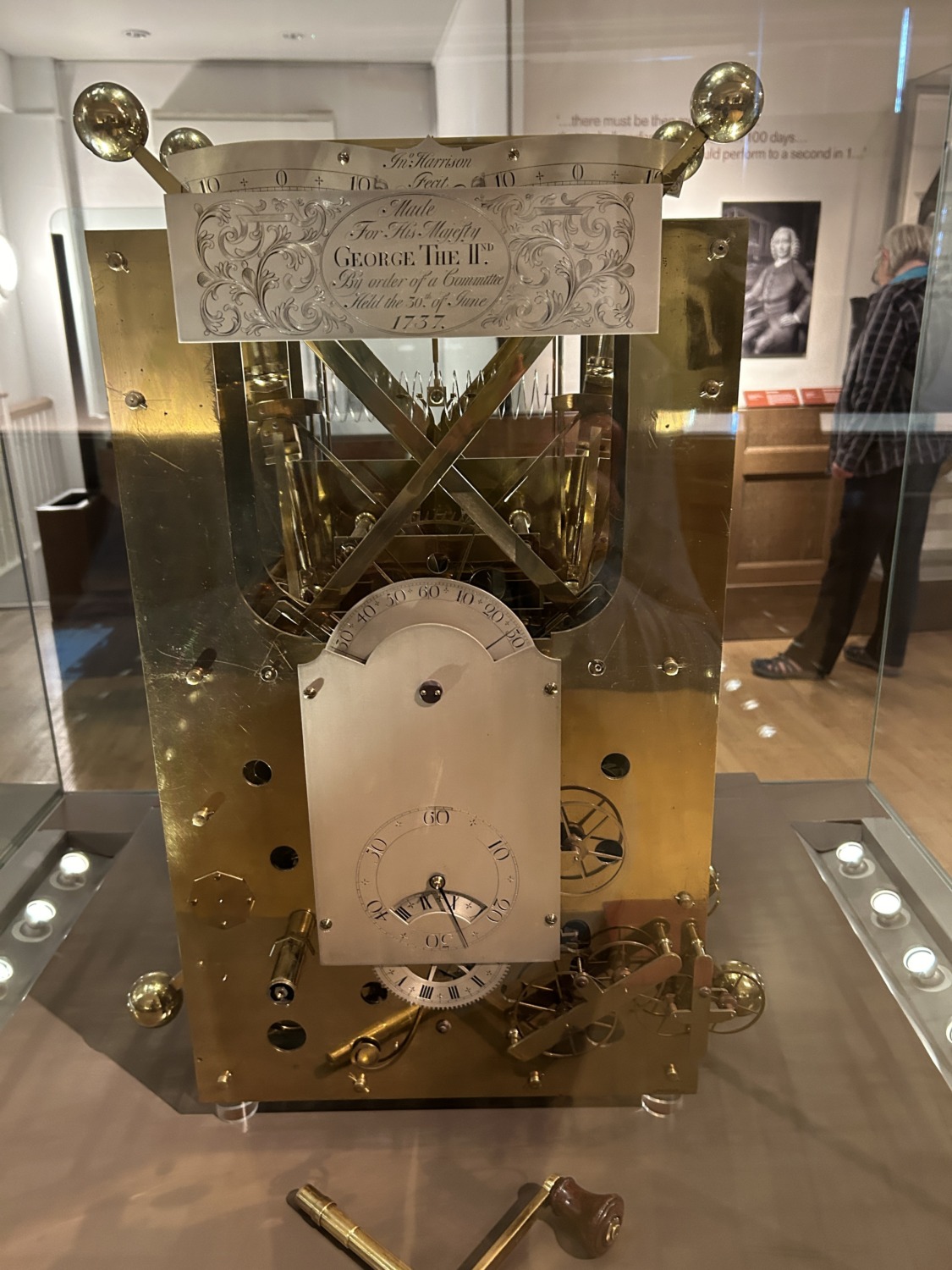
I really enjoyed learning about John Harrison, who devoted his life to developing the marine chronometer. He built one prototype after another which all had major flaws. Then he chucked all those designs and started in a totally different direction which was, finally, the right way to go. His invention saved the lives of countless seamen who could now accurately calculate their position in the ocean.
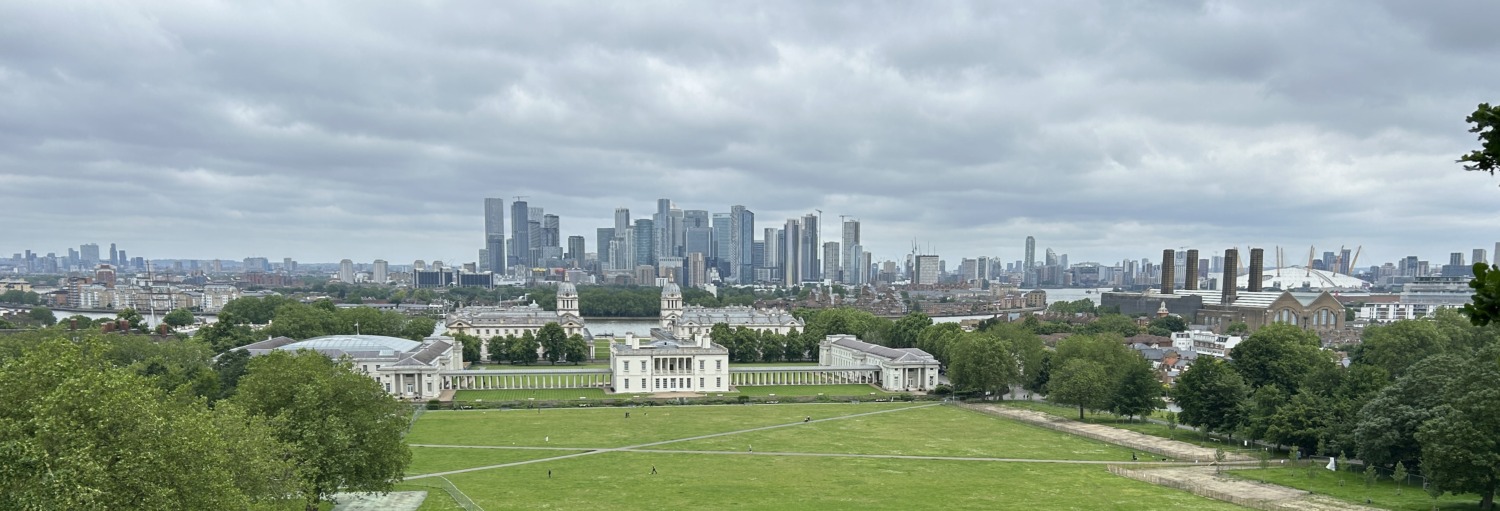
Tom’s highlight from the Royal Observatory was watching the ball drop from the top of the building. While we were at the Royal Observatory, we read about the ball dropping every day at 1 p.m. Because the Royal Observatory can be seen from so many places in and around London, people used it to set their watches. Captains used the ball drop to set their chronometers before they went to sea.
We were in the British Maritime Museum and noticed we could see the Royal Observatory from a window. Tom noticed that the ball, which had been on the roof, had moved halfway up the pole. The time was 12:55. We watched as the ball rose all the way to the top of the pole and then suddenly dropped at 1 p.m. We looked at our phones and they said it was exactly 1 p.m. Cool!
After seeing everything at the Royal Observatory, Tom and I grabbed a sandwich and cookie at a bakery and then headed to the British Maritime Museum. The United Kingdom has a long history of dominance over the seas, so we figured it would be pretty interesting. We saw displays about British exploration around the world, about colonialism, and about the introduction of slavery. There was a section on the Royal Navy that focused on Horatio Nelson. Nelson is regarded as the greatest naval commander in British history.
We saw a display on Horatio Nelson at the Museo Historico Militar de Canarias in Tenerife, earlier on our trip. The battle at Tenerife was the only battle Nelson ever lost. He also lost his arm in Tenerife. Nelson lost his life at the Battle of Trafalgar, but he won that battle. We saw the coat he was wearing when he received the mortal shot. The British Maritime Museum was interesting with a variety of artifacts on display.
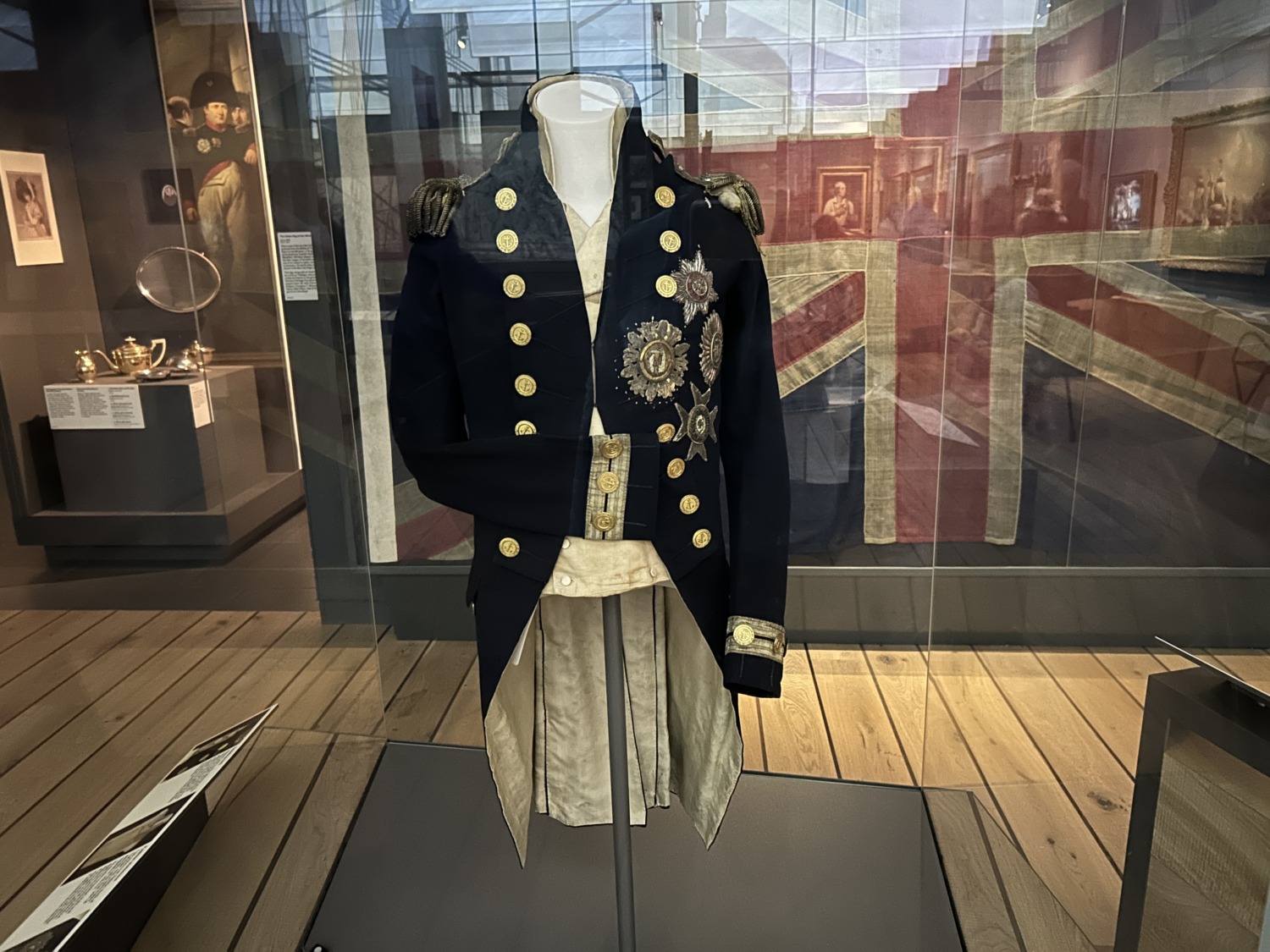
After two museums, Tom and I enjoyed walking around Greenwich a little. There is a university there and lots of parks and green space. We saw the Cutty Sark and happened on a street fair with food booths and a merry-go-round. After all that, we made our way back to the DLR and then back on the Tube. Soon enough we were within walking distance of our hotel.
We had one more place to visit, however, before we ended our exploring for the day. The Charles Wesley Memorial was less than a mile walk from our hotel. I had to see that! Charles arranged to be buried in the Old St. Marylebone Church graveyard. Today the church and the graveyard are both gone, but Charles Wesley’s Memorial stands in a small memorial garden on the site. Charles lived nearby on Wheatley Street.
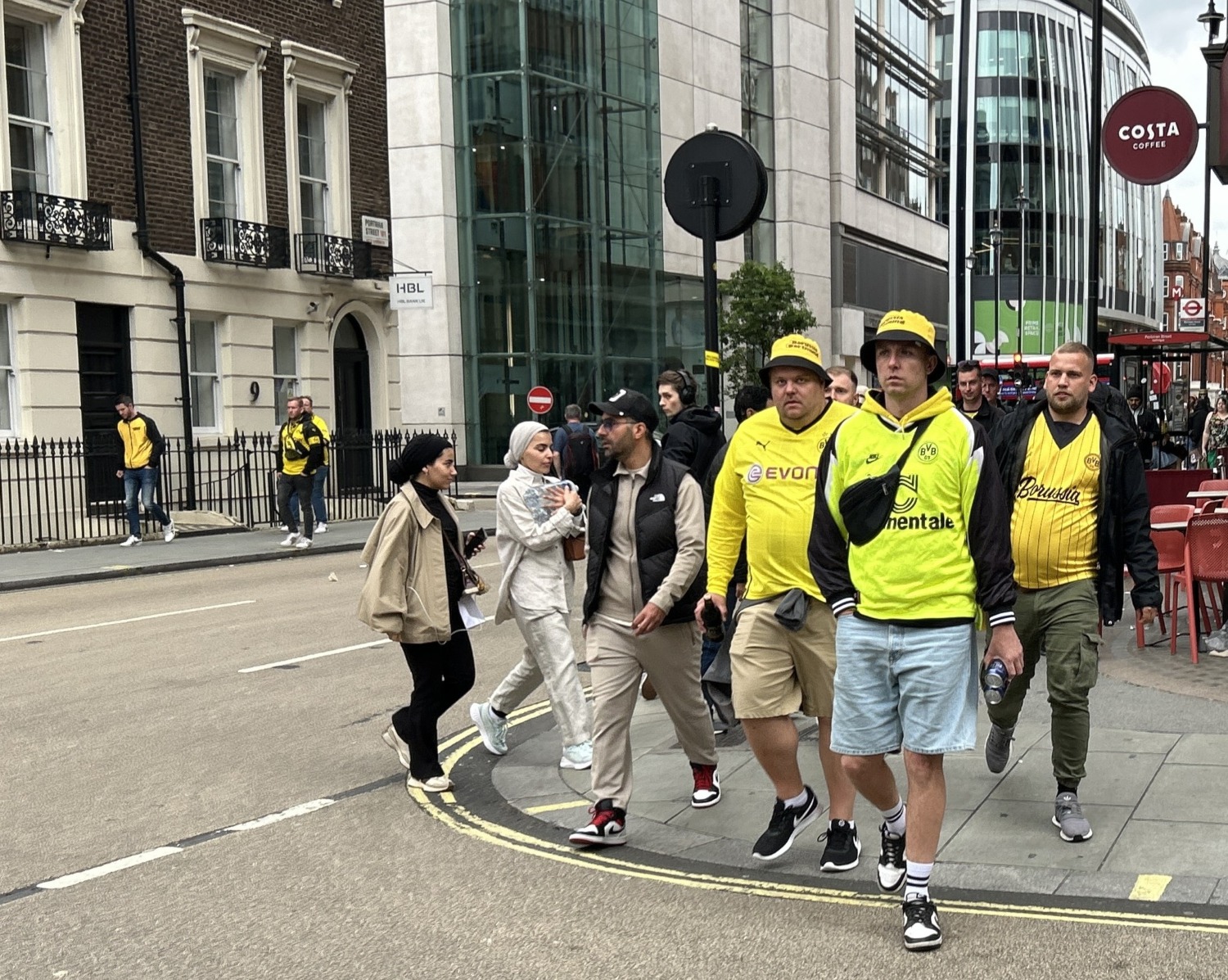
We had an enjoyable walk to the Charles Wesley Memorial. There was a big soccer game in town and there were rowdy (drunk) Germans everywhere singing team songs and drinking beer. Lots of security people were out in the street keeping control over the traffic. The game didn’t start until 8 p.m. but 50,000 Dortmund fans had gathered in Hyde Park, about a block over from our hotel. Tom and I kept laughing at how good a time all the German fans were having. We didn’t see any Real Madrid fans (the team they are playing) but Spain is farther away from London than Germany.
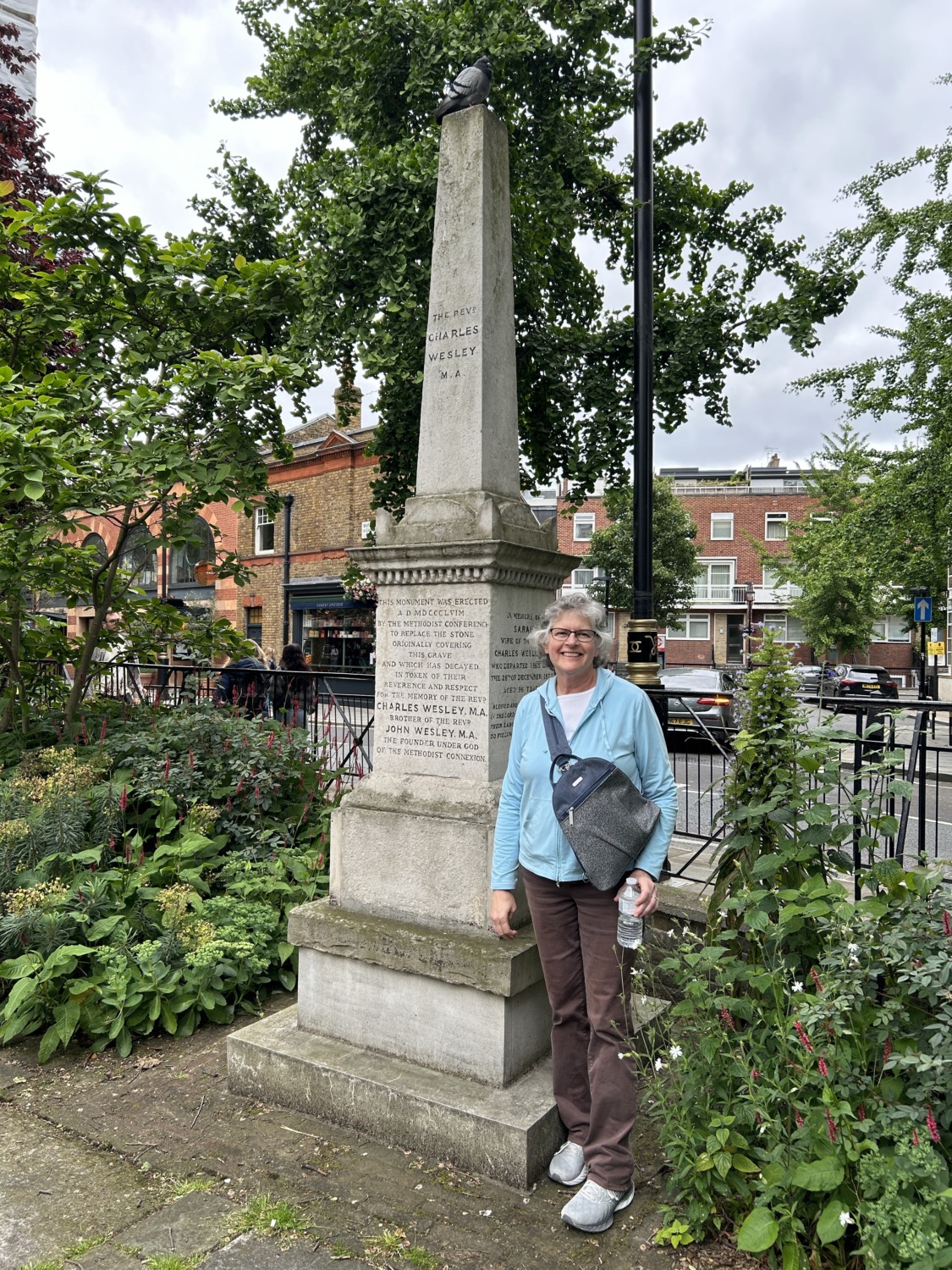
Tom located the Charles Wesley Memorial without any problem and we spent some time admiring it. The memorial stands in a small park with historical information about the church and some of the famous people buried in the cemetery. Charles Wesley is the most famous, in my opinion. I sang the first verse of “O For a Thousand Tongues to Sing” in his memory.
Tom and I really enjoyed our time at Greenwich and the Royal Observatory. Tomorrow we started the United Kingdom land portion of our trip.

